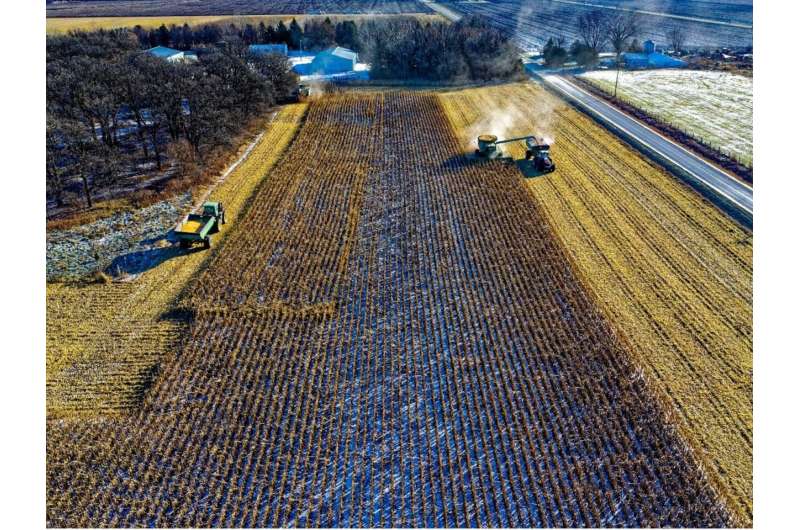This article has been reviewed according to Science X's editorial process and policies. Editors have highlighted the following attributes while ensuring the content's credibility:
fact-checked
peer-reviewed publication
trusted source
proofread
Agricultural soils are efficient ice nucleating particles in the southern great plains
INPs are a rare subset of atmospheric aerosol that can initiate ice formation in clouds. There is a significant gap between scientists' ability to measure INPs and to predict their concentrations and variability in large-scale weather and climate models.
This is partly because of the wide variation in the ice nucleation efficiency of different particle types. As a result, even low-abundance particle types need to be represented in global climate models if their ice nucleation efficiency is high enough.
Understanding the sources of INPs in different regions is difficult, partly because their rarity makes it difficult to observe and identify them directly in the atmosphere. Traditional methods of measuring aerosol composition can provide information on the size and composition of the overall particle population.
INPs, however, can be as rare as one particle in one million, and they can have properties that are distinctly different from the majority of particles in the air. Because of this, it is challenging to determine the identities of INPs in field experiments when using traditional measurement methods.
To address this challenge, researchers utilized the technically challenging "residual method" to directly measure INP composition at the Southern Great Plains atmospheric observatory near Billings, Oklahoma. In this approach, individual INPs are separated from the total particle population, and their size and composition is measured with highly sensitive, specialized methods.
Their findings are published in the Journal of Geophysical Research: Atmospheres.
Using this method, researchers observed that ambient particles were dominated by carbonaceous and secondary aerosol, while dust was the most efficient INP type. They also observed a novel mixed particle type consisting of a smooth carbonaceous core (like a tar ball) internally mixed with dust fragments.
Dust INPs were enriched in phosphate, which is a good marker for agricultural soils, indicating that these windblown agricultural dusts may be an important source of INPs in the region. However, researchers were unable to distinguish whether this phosphate originated from natural microbial activity, or from the application of phosphate-containing fertilizers.
Future research should investigate the ice nucleation efficiency of soils before and after fertilizer application to determine whether fertilizers may be partly responsible for the high ice nucleation efficiency of agricultural soils.
More information: Gavin C. Cornwell et al, Enrichment of Phosphates, Lead, and Mixed Soil‐Organic Particles in INPs at the Southern Great Plains Site, Journal of Geophysical Research: Atmospheres (2024). DOI: 10.1029/2024JD040826
Journal information: Journal of Geophysical Research - Atmospheres
Provided by Pacific Northwest National Laboratory






















